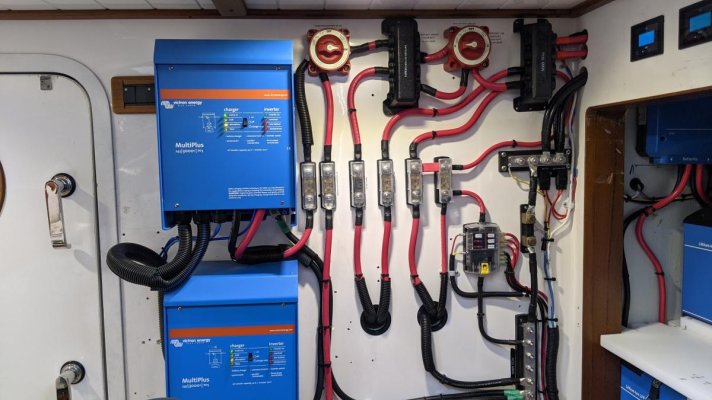Wild Blue
Veteran Member
Looks Like We Missed the E11 Requirement
Good stuff Peter.
A couple years ago we built a new L-I house, removing the AGM bank. It has split banks with external BMS for each. We assumed that each BMS would serve as the battery bank disconnect.
An overview photo of the system is attached. Both banks come together on the POS MAIN busbar in the upper right hand corner. To comply with E11, looks like we have room to add a manual disconnect switch for each bank.
Thanks for the heads up.
Alex
Good stuff Peter.
A couple years ago we built a new L-I house, removing the AGM bank. It has split banks with external BMS for each. We assumed that each BMS would serve as the battery bank disconnect.
An overview photo of the system is attached. Both banks come together on the POS MAIN busbar in the upper right hand corner. To comply with E11, looks like we have room to add a manual disconnect switch for each bank.
Thanks for the heads up.
Alex

